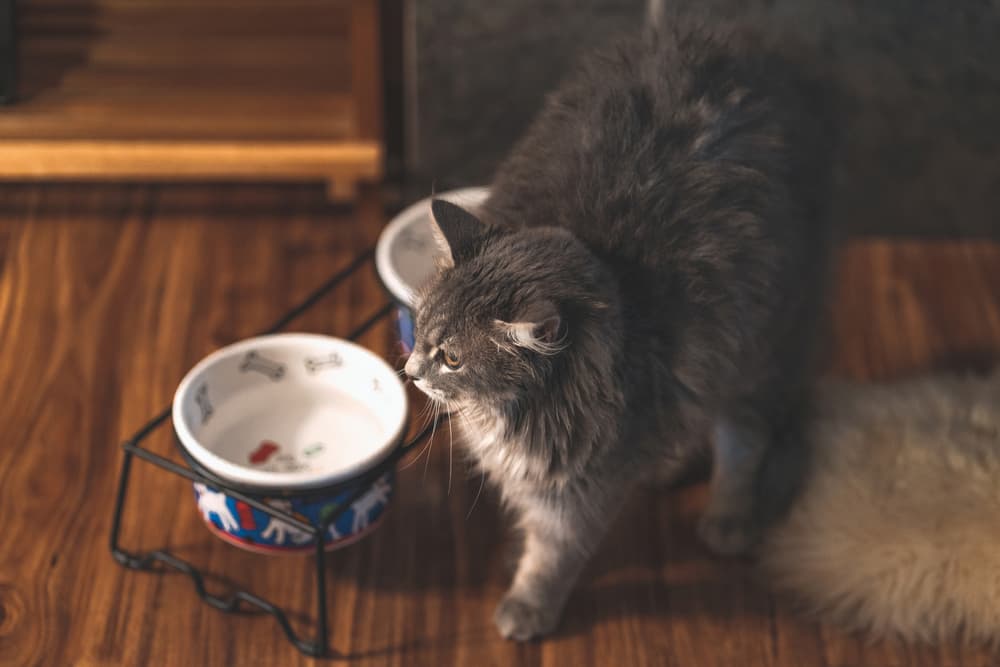Cat Arthritis Treatment Plan: Steps and What to Expect

Arthritis, also referred to as osteoarthritis (OA) or degenerative joint disease, is a common condition in cats. In fact, about 40 percent of all cats show clinical signs of osteoarthritis (1), and up to 90 percent of cats over 12 years old show radiographic (X-ray) evidence of the disease (2).
The symptoms of arthritis in cats can vary from subtle to severe, depending on your cat’s joint changes and their pain sensitivity. However, even mild arthritis warrants treatment. Arthritis is a chronic, progressive disease, and early intervention plays a valuable role in maintaining your cat’s quality of life.
Here is what you can expect when it comes to managing feline osteoarthritis, including cat arthritis treatment plan steps and tips for keeping your pet comfortable.
Cat Arthritis Treatment Plan: What to Expect

Once your cat has an official diagnosis of osteoarthritis, your veterinarian will recommend a treatment plan for your cat. This treatment plan will reflect the severity and location of your cat’s arthritis, other medical conditions your cat is dealing with, and your family’s lifestyle and financial considerations.
Arthritis treatment for cats typically involves a combination of the following:
- Medication
- Dietary changes
- Nutritional supplements
- Lifestyle changes
In rare cases, your veterinarian may recommend surgery for severe arthritis. The goal of surgery is to alleviate instability or correct misalignments in joints.
Feline Arthritis Treatment Cost
The cost of arthritis treatment for cats can vary, depending on the severity of your cat’s condition and how your cat responds to therapy. In general, you can expect that your cat will see your veterinarian every three to six months for arthritis monitoring. Additionally, your cat may require a number of different medications and/or supplements.
In general, you can expect to spend $200-$500 per year on arthritis treatments for your cat. If your cat needs surgery or other advanced treatments, this cost will be higher.
Cat Arthritis Medications
Medications play a key role in the management of arthritis in cats. Non-steroidal anti-inflammatory drugs (NSAIDs) control pain and inflammation. For this reason, they are a commonly-used arthritis medicine for cats. However, there are risks associated with long-term NSAID use in cats. Your veterinarian will carefully weigh the expected benefits of NSAIDs against the potential risks for your cat when making treatment recommendations.
There are two NSAIDs labeled for use in cats—meloxicam (Metacam oral liquid) and robenacoxib (Onsior tablets)—but neither is specifically approved for the treatment of chronic pain associated with arthritis (they are indicated for postoperative pain).
Other pain medications can also be valuable in cats. These medications may be prescribed in addition to an NSAID or in place of an NSAID:
- Amantadine: This medication has multiple uses, one of which is to decrease the brain’s sensation of pain.
- Gabapentin: This anti-seizure medication can alleviate the sensation of pain, especially nerve pain.
- Tramadol: This pain medication has variable results in cats, but some studies have demonstrated that it may help relieve arthritis pain when combined with an NSAID (3).
Finding the best cat arthritis medicine may require some trial and error, because each cat responds differently to medication. Your veterinarian will work closely with you to develop an effective pain management plan for your cat’s arthritis.
Finally, there is a new drug that has recently become available for the treatment of osteoarthritis in cats. Frunevetmab (Solensia) is an antibody injection that veterinarians give once monthly for the treatment of arthritis. This medication blocks the effects of certain chemicals involved in joint inflammation.
Tips for Managing Arthritis Pain in Cats

Simple changes at home can keep a cat with arthritis more comfortable. Consider the following:
- Be sure your cat’s litter box is easy to access. If your litter box has high sides, cut a low opening in the front so your cat can easily step in and out of the litter box.
- Use a large litter box to provide plenty of room for your cat to maneuver.
- Elevate your cat’s food and water bowls to a comfortable height.
- Place steps or ramps to allow your cat to access elevated surfaces, such as your bed, sofa, etc.
- Use heating pads, set on a low setting, under cat beds to provide a comfy resting spot for your cat. Turn off heating pads when unattended.
These simple steps can make your home environment more comfortable for a cat with arthritis.
Dietary Considerations for Cats With Arthritis
One of the most valuable things you can do for your arthritic cat is to control their body weight. Excess weight puts extra pressure on your cat’s joints. Additionally, fat itself releases chemicals that promote inflammation, worsening your cat’s arthritis. In general, cats with arthritis should be kept at the low end of their healthy weight range. Talk to your veterinarian about your cat’s body weight and, if needed, work with your veterinarian to formulate a weight loss plan.
Prescription diets are also available specifically to support joint health in cats. These diets are low in calories, but also contain supplements to promote joint health and control inflammation.
Arthritis Supplements for Cats

Cat arthritis supplements can play a valuable role in combating feline arthritis.
Glucosamine and chondroitin are available in many over-the-counter and prescription cat joint supplements. These compounds work together to promote cartilage healing within the joints, while also improving the quantity and quality of your cat’s joint fluid.
Omega-3 fatty acids, especially EPA and DHA, play a valuable role in combating inflammation within the body. Fish oil supplements are the best source of omega-3 fatty acids, as these fatty acids are more easily absorbed from fish sources than from plant-based sources.
Nutritional supplements can vary significantly in quality, and they are not well-regulated. For this reason, it’s best to only purchase supplements from a trusted provider. Talk to your veterinarian to determine the best supplements for your cat’s arthritis treatment.
Arthritic Cat Exercise Plan

Exercise can play a valuable role in the treatment of feline arthritis. Keeping your cat active and moving not only promotes weight loss, but it can also help strengthen muscles that provide support for your cat’s joints.
Ideally, a cat with arthritis should receive low-impact exercise. Intense or prolonged exercise, such as an hours-long session of chasing a laser pointer, could lead to a worsening of your cat’s arthritis pain.
Instead, increase your cat’s activity level in subtle, gradual ways. Consider using a hunting feeder for your cat, which is a small toy that dispenses food as your cat plays with it. Alternatively, you could hide your cat’s daily meals in multiple areas throughout your home. Find toys that your cat enjoys playing with and encourage short play sessions throughout the day.
If you’re looking to be a bit more proactive in your cat’s exercise, purchase a harness and attempt taking your cat for leash walks. Swimming is also an excellent exercise for cats with arthritis, if your cat will tolerate it!
Arthritis in Cats Treatment: Tips and Advice

Arthritis is a chronic condition, and it is likely to progress over time. Treatment for arthritis in cats is intended to reduce the discomfort associated with arthritis and slow its progression, not to completely cure the arthritis. Your cat will require lifelong treatment.
With effective pain medication, you should see a significant improvement in your cat’s pain level. Limping may resolve (or at least lessen) and your cat’s overall activity level is likely to increase. Your cat may not become completely pain-free with treatment, but you should see an improvement in your cat’s signs of arthritis.
Monitor your cat for any side effects associated with their medication or supplements. Side effects such as vomiting, diarrhea, decreased appetite, and lethargy warrant a call to your veterinarian. If your cat experiences side effects with a particular medication, your veterinarian can recommend measures to decrease side effects or prescribe an alternative treatment.
You may also want to consider alternative therapies for your cat’s arthritis. Acupuncture, laser therapy, and physical therapy have all been shown to be beneficial in managing feline arthritis. Stem cell treatments have also shown promising results in dogs, horses, and humans, but these treatments have not yet been studied in cats.
Finally, remain in touch with your veterinarian. Managing arthritis is a long-term commitment, and it’s important to keep the lines of communication open. If you have any questions or concerns about your cat, reach out to your veterinary team. Your cat’s veterinarian is the best person to provide you with information about treatment for cat arthritis.









